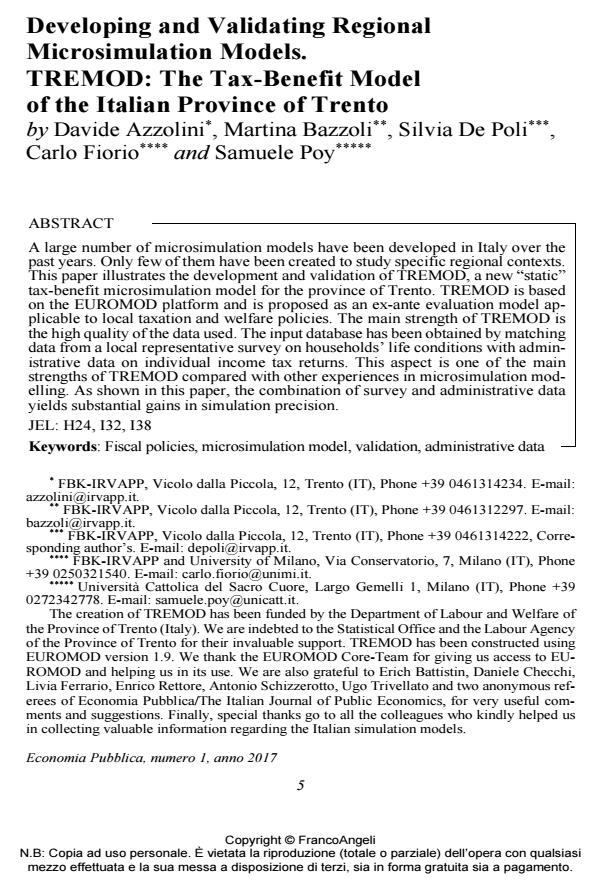Developing and Validating Regional Microsimulation Models. TREMOD: The Tax-Benefit Model of the Italian Province of Trento
Journal title ECONOMIA PUBBLICA
Author/s Davide Azzolini, Martina Bazzoli, Silvia De Poli, Carlo Fiorio, Samuele Poy
Publishing Year 2017 Issue 2017/1
Language English Pages 29 P. 5-33 File size 319 KB
DOI 10.3280/EP2017-001001
DOI is like a bar code for intellectual property: to have more infomation
click here
Below, you can see the article first page
If you want to buy this article in PDF format, you can do it, following the instructions to buy download credits

FrancoAngeli is member of Publishers International Linking Association, Inc (PILA), a not-for-profit association which run the CrossRef service enabling links to and from online scholarly content.
A large number of microsimulation models have been developed in Italy over the past years. Only few of them have been created to study specific regional contexts. This paper illustrates the development and validation of TREMOD, a new "static" tax-benefit microsimulation model for the province of Trento. TREMOD is based on the EUROMOD platform and is proposed as an ex-ante evaluation model applicable to local taxation and welfare policies. The main strength of TREMOD is the high quality of the data used. The input database has been obtained by matching data from a local representative survey on households’ life conditions with administrative data on individual income tax returns. This aspect is one of the main strengths of TREMOD compared with other experiences in microsimulation modelling. As shown in this paper, the combination of survey and administrative data yields substantial gains in simulation precision.
Keywords: Fiscal policies, microsimulation model, validation, administrative data
Jel codes: JEL: H24, I32, I38
Davide Azzolini, Martina Bazzoli, Silvia De Poli, Carlo Fiorio, Samuele Poy, Developing and Validating Regional Microsimulation Models. TREMOD: The Tax-Benefit Model of the Italian Province of Trento in "ECONOMIA PUBBLICA " 1/2017, pp 5-33, DOI: 10.3280/EP2017-001001